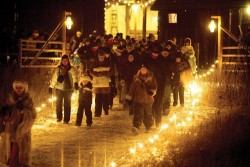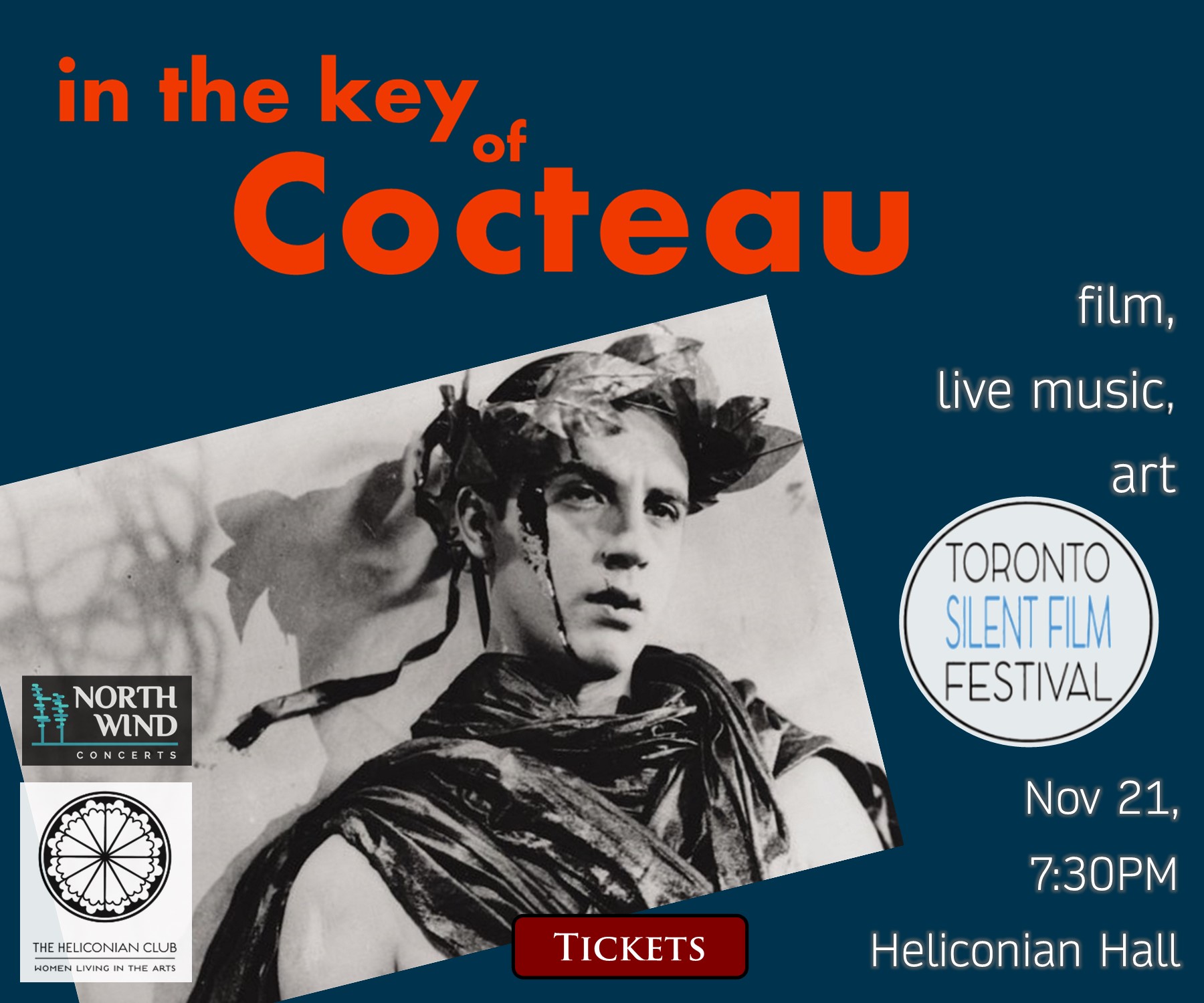The modern holiday that we understand as Christmas is a construct that arises from many different sources: a combination of pre-Christian winter solstice iconography; appropriated and re-interpreted prophetic Hebrew texts; various writers’ telling and retelling of the life and deeds of the mysterious, charismatic public speaker and teacher Joshua Ben Joseph (later more familiarly known as Jesus Christ); and the sung and spoken sacred texts of hundreds of millions of Christians around the world.
 Complicating the “modern” Christmas still further is the North American figure of Santa Claus, a benevolent gift-giver very loosely based on the third century Greek bishop Nicholas of Myra. Mercurial, harsh and irascible, the historical Saint Nick would have been a poor front-man for the vendors desperate to lure us to the shopping malls. He’d have been more likely to smite busy shoppers than to invite their children to sit upon his knee, wish list in hand.
Complicating the “modern” Christmas still further is the North American figure of Santa Claus, a benevolent gift-giver very loosely based on the third century Greek bishop Nicholas of Myra. Mercurial, harsh and irascible, the historical Saint Nick would have been a poor front-man for the vendors desperate to lure us to the shopping malls. He’d have been more likely to smite busy shoppers than to invite their children to sit upon his knee, wish list in hand.
It is not hard to imagine both Joshua and Nicholas together in some extra-worldly sphere, watching our frantic salterello of cards, gifts, parties and food with bemusement and despair in varied measure.
In the midst of this singular historical stew, music holds a special place in Christmas celebration. For many the pleasures of hearing and singing seasonal songs and carols is a welcome antidote to Christmas’ confused blend of commercialism, celebration, spirituality and dogma. The marvels and portents that accompany the birth of Christ reflect our joy, fear and incomprehension when confronted with one of the two most primal aspects of life–its beginning. Christmas music at its best combines joy with contemplation, the earth-bound with the marvellous.
The performative nature of Christmas concerts makes them simultaneous celebrations of, and comments on, the phenomenon of Christmas. Below are some concerts of note for the coming season.
On December 10, the Tallis Choir recreates a Christmas Eve mass as it would have been heard in Quebec in 1725. The concert includes Charpentier’s Messe de Minuit and carols by baroque composers from Quebec and France.
Between December 13 and 30, Theatre Columbus reinterprets the Nativity story, in an outdoor theatre presentation at the historic Evergreen Brick Works. The audience is advised to dress warmly. Theatre Columbus is a creative workshop of a theatre company, and this version of the Nativity story clearly falls refreshingly into the irreverent/revisionist category. A different choir will provide musical accompaniment for every performance.
The Magnificat, or the Song of Mary, is a text taken from the Gospel of Luke. It is an attempt to see the events of the Nativity from Mary’s point of view. Women who have experienced giving birth in difficult circumstances might have their own opinions about how well it succeeds. In any case, it has been set by many composers, and on December 8, English visitors, the Tallis Scholars, one of the world’s eminent chamber choirs, will be performing several of these diverse settings. Toronto Choral Society also looks to Europe, if somewhat further east, performing “An Eastern European Christmas” on December 14. As well as including Eastern European carols, the concert provides an opportunity to hear a Franz Liszt setting of the mass text, the Missa Choralis.
Two great writers, Dylan Thomas and Charles Dickens, wrote very differently enchanting commentaries on the nature of Christmas. Thomas’ A Child’s Christmas in Wales is rooted in the real and physical, the tangible sensory understanding of a special event seen through the primal senses of a child: All the Christmases roll down toward the two-tongued sea, like a cold and headlong moon bundling down the sky that was our street; and they stop at the rim of the ice-edged fish-freezing waves, and I plunge my hands in the snow and bring out whatever I can find …
Dickens’ A Christmas Carol combined his central theme of the struggle between greed and charity with a vastly entertaining ghost story that has made the character of Ebenezer Scrooge almost as significant as Santa in the complex modern North American Christmas iconography.
Two choirs combine music with each of these literary works:
Annex Singers combine A Child’s Christmas in Wales with works by Sweelinck, Joubert, Walton and Lauridsen on December 10. Then on December 18, Guelph’s Dublin Street United Church includes the work in “A Victorian Christmas,” with the Trillium Brass as guests. For those whose appetite for Welsh-ness is not satisfied by Dylan Thomas alone, the Toronto Welsh Male Voice Choir performs “A Welsh Christmas” on December 7 and 11.
Generosity is the theme of A Christmas Carol, which appears in two upcoming benefit performances. On December 4 the Nathaniel Dett Chorale teams up with the Choir of St. Timothy’s Anglican Church to sing in support of the Senior’s Health Centre of the North York General Hospital. On the same night, the Runnymede United Church Choir performs their Dickens-themed concert, which includes an appearance by tenor Ben Heppner, in support of the The Stop Community Food Centre.
Special church pageants and carol services are also an integral part of this season. The Church of the Holy Trinity’s nativity pageant, a popular draw, runs between December 9 and 24. Eglinton St. George United Church’s December 11 carol service includes Benjamin Britten’s iconic Ceremony of Carols. Peruse the choral listings for other carol concerts — you will find inventive musical choices and choral groups that you might have previously missed.
In the multicultural GTA, some choirs acknowledge and explore the mid-winter festivals that take place in non-Christian cultures, such as Hindu Diwali, the African-American Kwanzaa and Chanukah, the Hebrew festival of lights and gifts.
On December 14 the Toronto Jewish Folk Choir’s free “Chanukah Concert Live” includes songs in Yiddish, Hebrew, Ladino and English. North York’s Alexander Singers and Players combine Christmas and Chanukah music at “A Festive Concert” on December 10.
Hart House Singers and Echo Women’s Choir present interesting programmes of world music on December 4 and 11 respectively. These types of concerts are a welcome antidote to the seasonal saturation of familiar songs and carols that, while beautiful, lose some of their appeal after the 1000th hearing.
And of course, no December choral column would be complete without a mention of what has become Christmas’ most emblematic choral work, Handel’s Messiah.
So there, I’ve mentioned it. Let’s move on now. It’s always interesting to investigate the varied programmes that choirs messiah choose during the Christmas season. Drawing on the vast repertoire Messiah of music from different times and locations Messiah allows choirs MESSIAH to create unusual MESSIAH MESSIAH.
Oh, all right. Can’t you Handelians take a joke? It’s a great composition. I love it! So quit spamming my website and hacking my documents. I promise to venerate Handel’s Messiah until the end of my days. And tell that strange alto from Kitchener she can take down her aria recording, Ben is Despised, from YouTube.
Part of the fun of hearing such a well-known work is experiencing the varied interpretations that different soloists, conductors and choirs come up with. Increasingly, musicians are bringing a creative disrespect to this piece, toying with orchestration, interpretation and even improvisatory aspects of it, to keep it fresh and interesting. Yet a simple, straightforward performance, well executed, allows the brilliance of its construction to shine through as well. My recommendation is to attend a Messiah performance by a choir unfamiliar to you. So many groups are performing this work — take the opportunity to acquaint yourself with a choir that you have not yet seen perform, and expand your knowledge of the GTA choral scene. We have even appended a handy “Messiah QuickPicks” to this column (see next page) to guide you in your search.
 Finally, one final concert reminds us that even Christmas’ familiar calendar date is not an agreed-upon fact. On January 8 the Vesnivka Choir and Toronto Ukrainian Male Chamber Choir present “A Ukrainian Christmas Concert.” Eastern European Christmas culture can be wonderfully rich and mystical, and is a link to Christianity’s oldest roots. Could it be that this concert — presented at a time at which the rest of us are glumly contemplating our credit card statements — is the only one here that would have made any kind of cultural sense to the historical Saint Nicholas?
Finally, one final concert reminds us that even Christmas’ familiar calendar date is not an agreed-upon fact. On January 8 the Vesnivka Choir and Toronto Ukrainian Male Chamber Choir present “A Ukrainian Christmas Concert.” Eastern European Christmas culture can be wonderfully rich and mystical, and is a link to Christianity’s oldest roots. Could it be that this concert — presented at a time at which the rest of us are glumly contemplating our credit card statements — is the only one here that would have made any kind of cultural sense to the historical Saint Nicholas?
Christmas can be a very difficult time for people, as they attempt to reconcile the Apollonian ideal of the holiday with life’s often disappointing realities. But as I hope I’ve made clear above, a monolithic Christmas tradition does not in fact exist, and never did. Accordingly, we are free to define this holiday in a way that makes sense to each of us. Relieved of the obligation to enact an ideal version of Christmas, one can instead pick and choose, discard and redefine — as history itself has done — which elements combine together to create your own understanding of the season.
LOOKING AHEAD TO JANUARY: After the December revels comes the new year’s hangover. The only solution, of course, is musical “hair of the dog” — i.e. more sybaritic choral excess. The January and February concerts mentioned below can feed this entirely healthy addiction.
Between January 18 and 22, the Toronto Symphony Orchestra performs Mozart’s d minor Requiem, his final, unfinished work before his untimely death.
Brahms then takes over on February 4. Two concerts to choose from are a concert by the Larkin Singers that includes Brahms’ Liebeslieder Walzer, and Kitchener’s Grand Philharmonic Choir performing Brahms’ Ein Deutsches Requiem and Arvo Pärt’s Credo and Cantus in Memoriam.
Finally, on February 2 and 3, Soundstreams presents the Amadeus Choir and Elmer Iseler Singers in an intriguing presentation of The Sealed Angel by Rodion Shchedrin. Shchedrin is a living piece of history, a Russian composer who lived through the Soviet era and who continues to work today. The staged performance includes the participation of ProArteDanza dance company.
He can be contacted at choralscene@thewholenote.com. Visit his website at http://benjaminstein.ca/.



